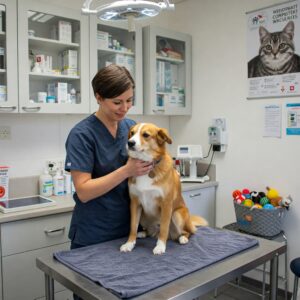9 Things to Know Before Adopting a Rescue Dog (That No One Tells You)

Introduction
Adopting a rescue dog is rewarding—just ask the thousands of New Yorkers who have welcomed a pup into their tiny apartments and oversized hearts. But before you picture slow-motion reunion scenes and tail-wagging gratitude, let’s set the record straight. Rescue dogs aren’t accessories, and they don’t come pre-programmed to love you instantly. If you’re thinking about adoption, here’s what you actually need to know.
1. The “Honeymoon Phase” Might Not Be What You Expect

That sweet, quiet dog you just brought home? That’s their poker face. Most rescue dogs need time before their true personality shows. Enter the 3-3-3 rule:
- 3 days to decompress
- 3 weeks to start adjusting
- 3 months to feel at home
Some dogs get clingy, others shut down, and some test every boundary in your lease agreement. The best way to help? Set routines, be patient, and brace yourself for surprises.
2. Rescue Dogs Aren’t Always “Grateful”—and That’s OK

There’s a common belief that rescue dogs “know” they’ve been saved. Some people expect undying loyalty on day one. Reality check: Dogs live in the moment. Your new pup may be scared, indifferent, or downright suspicious of you. That’s not ingratitude—it’s survival. Building trust takes time, consistency, and a lot of treats.
3. Adoption Isn’t Free—There Are Hidden Costs

Think you’re saving money by adopting instead of buying? Maybe. But the real costs come after the paperwork. Be ready for:
- Vet visits (vaccines, microchipping, checkups)
- Food & supplies (goodbye, extra closet space)
- Training & socialization (not optional)
- Emergency care (because NYC sidewalks = mystery hazards)
Adoption fees range from $50-$500, but long-term care? That’s an ongoing investment. Check out this pet budget calculator to get a better idea of expenses.
4. Training a Rescue Dog Can Be Different (and Harder) Than a Puppy

Rescue dogs aren’t blank slates. They come with experiences—good, bad, and occasionally baffling. Housebreaking, crate training, and socialization all take work. If your dog seems untrainable, they might just be confused. The fix? Patience, structure, and positive reinforcement (translation: bribery with treats).
Consider working with a professional trainer who specializes in rescue dogs.
5. Medical Surprises Are Common

Rescue dogs often have unknown medical histories. Some common issues include:
- Dental disease
- Skin infections
- Parasites
- Allergies
The best move? Schedule a vet visit ASAP after adoption. Preventative care now saves big vet bills later. The ASPCA Poison Control Center is also a great resource to have on hand.
6. Can Rescue Dogs Live with Cats or Other Pets?

Maybe. Maybe not. Some rescues grew up with cats, others see them as chew toys. If you have other pets, introduce them gradually:
- Start with scent swapping
- Use controlled, leashed meetings
- Watch for red flags (growling, intense staring, general murder-y vibes)
Some pairings work. Others don’t. Be prepared for both. Here’s a guide to introducing dogs and cats safely.
7. Rescue Dogs Can Make Great Service or Therapy Dogs (But Not Always)
Not every rescue is cut out for service work, but some thrive with the right training. Traits that help:
- Calm temperament
- Confidence in new situations
- Trainability (read: they actually listen)
If you’re interested, look into professional training programs. But if your dog prefers couch naps over tasks, that’s valid too.
8. Where to Adopt a Rescue Dog in NYC

Looking for a pup? These reputable NYC shelters and rescues are a great place to start:
- Animal Care Centers of NYC (ACC)
- NYC Second Chance Rescue – A standout in NYC’s rescue community, this nonprofit goes above and beyond for dogs in need. They focus on urgent medical cases and dogs at risk of euthanasia, ensuring they get the care and second chance they deserve. If you’re looking to adopt or foster, this is a great place to start.
- Muddy Paws Rescue
- Badass Animal Rescue
- Hearts & Bones Rescue
- Social Tees Animal Rescue
9. Not Sure About Adopting? Try DoggyDay Instead

Love dogs but not ready for commitment? Enter DoggyDay—the platform that lets you spend time with dogs without the full-time responsibility. Whether you’re testing the waters before adopting or just need some canine companionship, you can connect with dog owners near you. Because sometimes, you just need a dog in your life—without the vet bills.
Curious? Learn more about how DoggyDay works.
Have you adopted a rescue dog? Share your experiences in the comments below!
